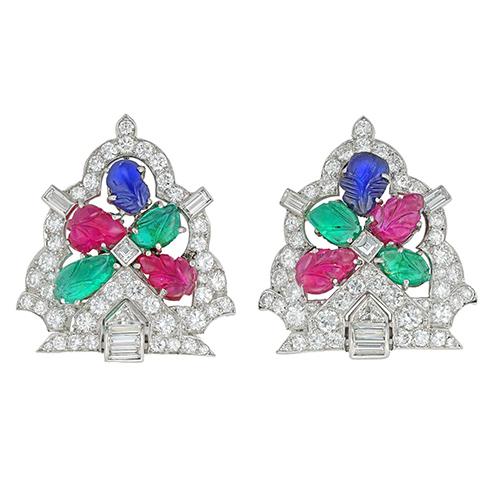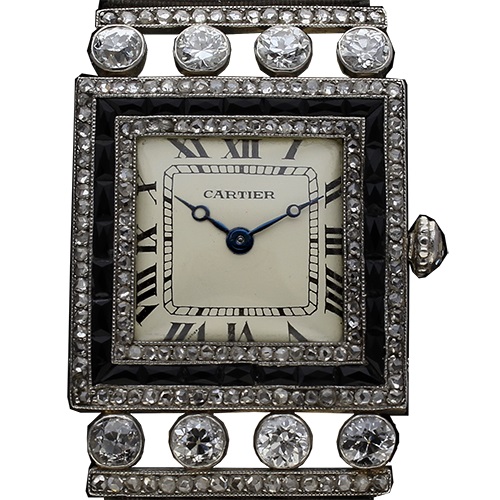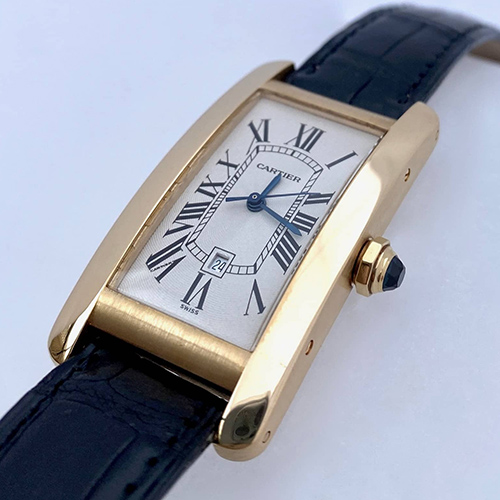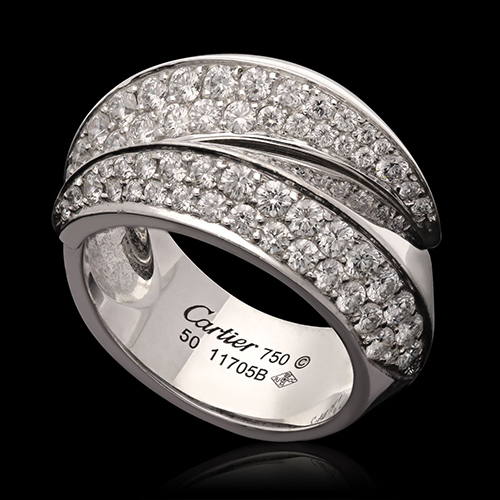

Founded in Paris in 1847, Cartier is one of the world's leading brands in designer jewellery, fine watchmaking, and luxury leather goods. Famously described by King Edward VII as "the jeweller of kings and the king of jewellers", their eye-catching works are worn by royalty and celebrity worldwide.
In stark contrast to their contemporary image, the Cartier story began with relatively humble origins. Founder Louis-François Cartier was born in Paris in 1819 to Pierre, a metal worker by trade, and Elisabeth, who worked as a washerwoman.
A bright young man with a lifelong passion for learning, Cartier’s parents were sadly too poor to provide their son a formal education. Instead, young Louis-François was put to work at the earliest opportunity, taking an apprenticeship in watchmaking with the Parisian master watch maker Adolphe Picard.
In February 1840, still only 20 years old, Louis-François married Antoinette Guermonprez and a year later the pair celebrated the birth of their first child Alfred Francois. On the work front, Cartier’s unflinching loyalty and diligence paid dividends in 1847 when he took over Picard’s workshop in Paris’ bustling Rue Montorgueil.
An ambitious and innovative businessman, Louis-François renamed the workshop Maison Cartier, and immediately began plans to improve its appeal. In addition to the company’s watchmaking prowess, Cartier began stocking a broader range of luxury goods. This is illustrated in the trade registry where Louis-François’ entry reads, "Successor of Mr. Picard, manufacturer of jewels, imaginative jewellery, fashion and novelty items".
 Aside from the production of timepieces, many of Cartier’s goods of this era were supplied by other manufacturers. However, Louis-François’ discerning eye for quality and craftsmanship meant that the firm rapidly gained favour with the great and good of Paris.
Aside from the production of timepieces, many of Cartier’s goods of this era were supplied by other manufacturers. However, Louis-François’ discerning eye for quality and craftsmanship meant that the firm rapidly gained favour with the great and good of Paris.
As Cartier’s notoriety gathered momentum, the company were able to move to more desirable premises, firstly in Place du Palais-Royale, 1853, and then in 1859 to Boulevard des Italiens. That same year, the firm gained noble patronage from Princess Mathilde, niece of Napoleon Bonaparte, elevating Cartier to the elite of Parisian society.
Around this time, Louis-François purchased the better-known jewellery house Maison Gillion to enhance his burgeoning company’s reputation. For the next 40 years the firm would be marketed as Cartier Gillion.
In 1872, Louis-François’ son Alfred joined the business and just two years later took over the day-to-day management, helping to expand their clientele within European aristocratic circles. In 1898, the firm was renamed Alfred Cartier & Fils and a year later the iconic Rue de la Paix premises were purchased, where Cartier remain to this day.
The introduction of Alfred’s three sons, Louis (1875-1942), Pierre (1878-1964), and Jacques (1884-1941), to the business in the early 20th century would trigger unparalleled success. Each brought a different set of skills to the family firm which combined would elevate Cartier to international acclaim.
 As the eldest, Louis would remain in Paris, overseeing the flagship store and leading innovation in the ever-expanding workshop. A creative genius, he took the world by storm in 1904 with the launch of the Cartier Santos wristwatch.
As the eldest, Louis would remain in Paris, overseeing the flagship store and leading innovation in the ever-expanding workshop. A creative genius, he took the world by storm in 1904 with the launch of the Cartier Santos wristwatch.
The watch was inspired by the Brazilian aviator Alberto Santos-Dumont who tasked his friend Louis with creating a practical alternative to the pocket watch for use when flying. Although not the first wristwatch on the market, the Cartier Santos would prove extremely popular and was pivotal in the growth in popularity of the wristwatch throughout the early 20th century.
Perhaps Louis’ most iconic design is the famous Cartier Tank wristwatch, inspired by the modernist lines of the Renault FT tank, first deployed by the French in 1917. Launched on the market in 1919, the Tank watch remains one of Cartier’s most popular designs more than a century later.
In contrast to Louis’ creative prowess, second son Pierre brought phenomenal marketing and business acumen to the Cartier brand. This was also combined with a charming personality that would propel him into the highest echelons of society.
Having been sent to Russia at an early age to study the craft of Carl Fabergé, Pierre returned to Western Europe in 1902, opening Cartier’s first London premises on New Burlington Street. Within just two years of opening the firm had secured the Royal Warrant from King Edward VII, the first of several such honours from monarchs across the globe.
Not content with cracking the London market, Pierre relocated to the USA in 1909, opening the firm’s first New York boutique on Fifth Avenue. Having married the American socialite Elma Rumsey a year earlier, Pierre found himself socialising with New York’s elite, such as the Vanderbilts, Rockefellers and Roosevelt’s, all of whom soon became patrons of Cartier.
 Arguably, Pierre’s most notorious transaction was the purchase and subsequent sale of the legendary Hope diamond in 1911. Cartier had the precious gem placed in a modern setting and successfully sold to mining heiress Evelyn Walsh McLean for a sum reported to be $300,000, more than $9.4 million today.
Arguably, Pierre’s most notorious transaction was the purchase and subsequent sale of the legendary Hope diamond in 1911. Cartier had the precious gem placed in a modern setting and successfully sold to mining heiress Evelyn Walsh McLean for a sum reported to be $300,000, more than $9.4 million today.
The youngest of the three brothers, Jacques inherited the London arm of the business from Pierre, relocating the premises to its current home in New Bond Street. Having apprenticed in all fields of the family business, Jacques found his personal niche as a connoisseur of gemstones.
In addition to his work in London, Jacques travelled frequently throughout the Indian subcontinent, forging friendships, and finding customers among the wealthy Maharajas of India. Throughout the 1920s and 1930s, Jacques would bring back many precious gemstones from his visits, together with ideas that would influence Cartier’s bestselling designs.
This is perfectly illustrated by Cartier’s hugely popular Tutti Frutti jewellery range, launched in 1925 and now heralded as a masterpiece of Art Deco jewellery. In fact, the eye-catching sapphire, emerald and ruby designs were entirely inspired by the colours of Indian royalty. The popularity of the Tutti Frutti style was enhanced by the fact that the imported stones made the range more affordable to a post-Depression era market. Ironically, today, high quality examples have fetched more than £1 million at auction.
Despite the passing of Jacques in 1941 and Louis just a year later, Cartier remained under family control until the Pierre passed away in 1964. Now owned by the Swiss based Richemont Group, Cartier continues to blossom with more than 200 stores worldwide in over 125 countries.
Click here to browse Cartier items currently available from BADA members.

